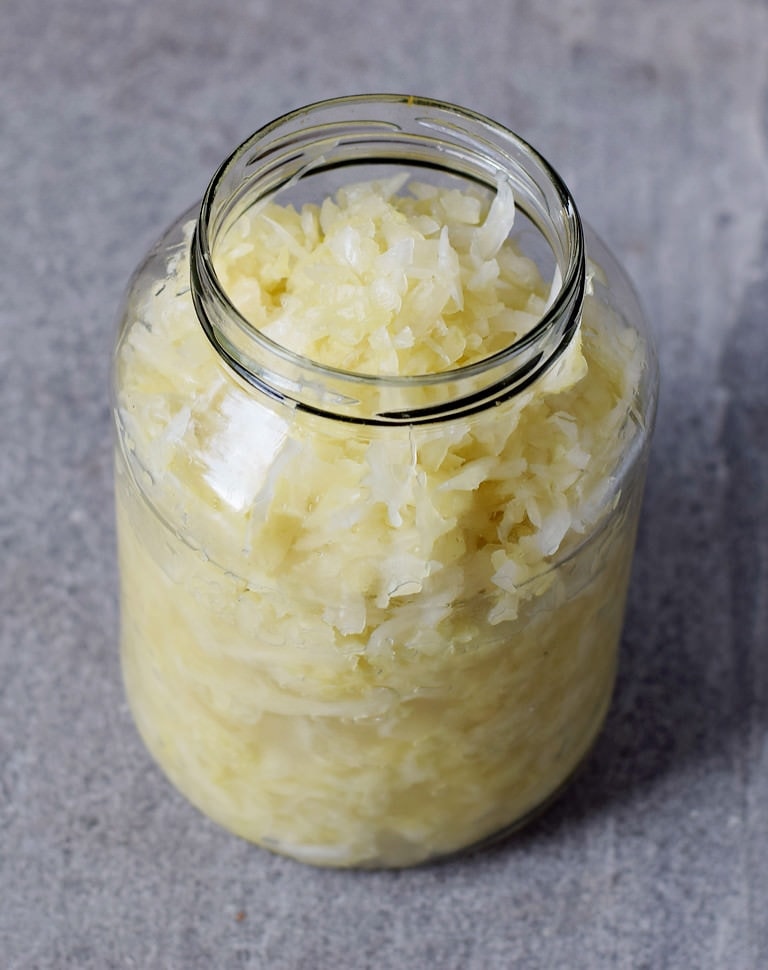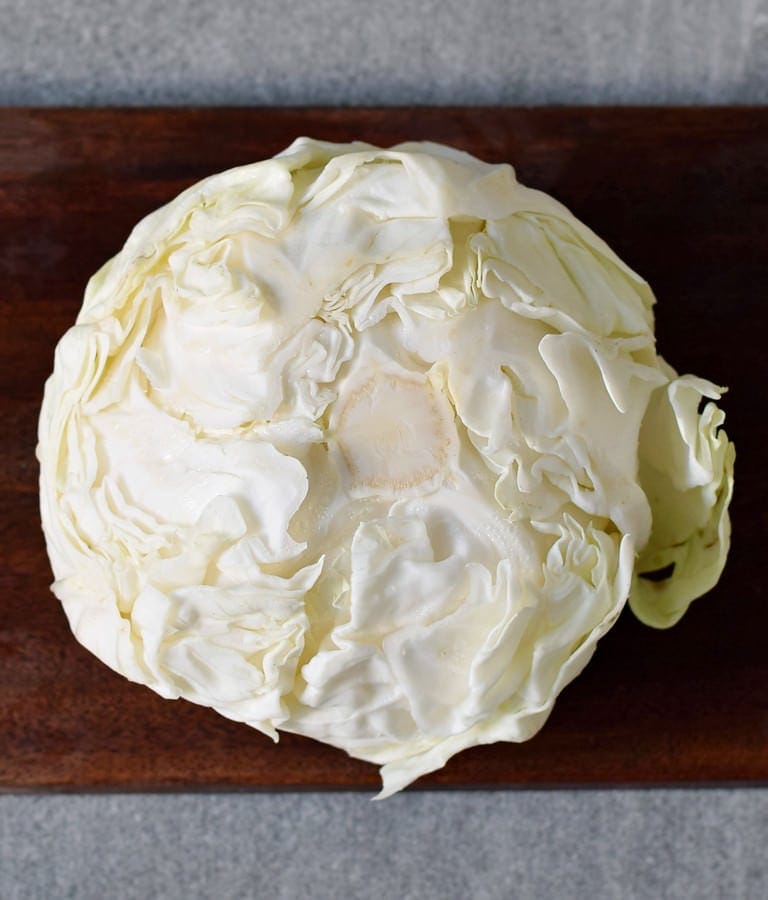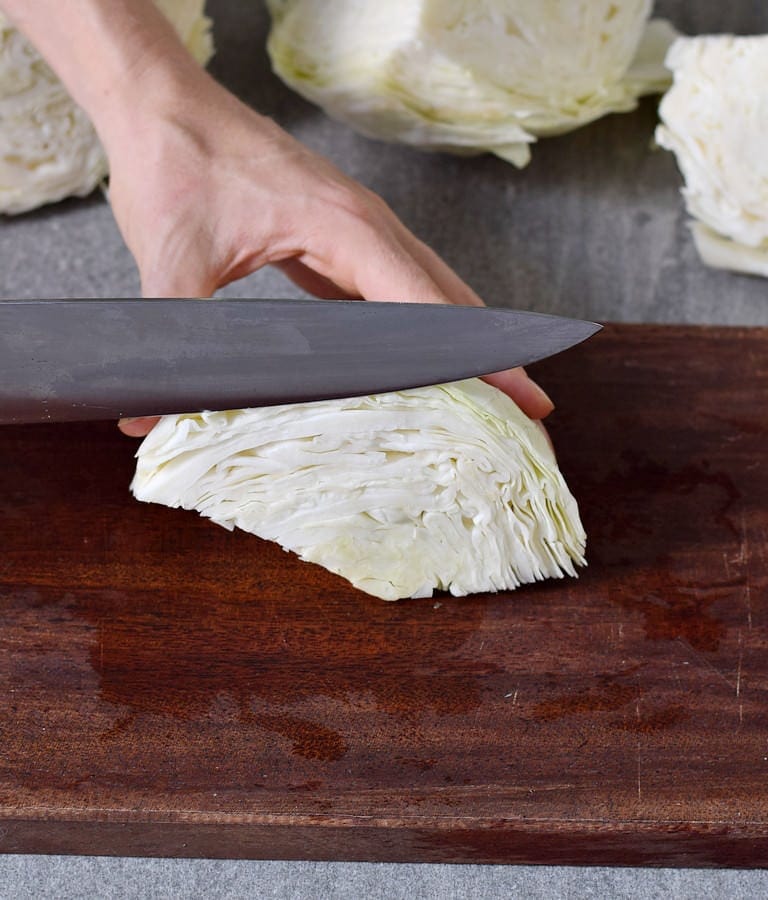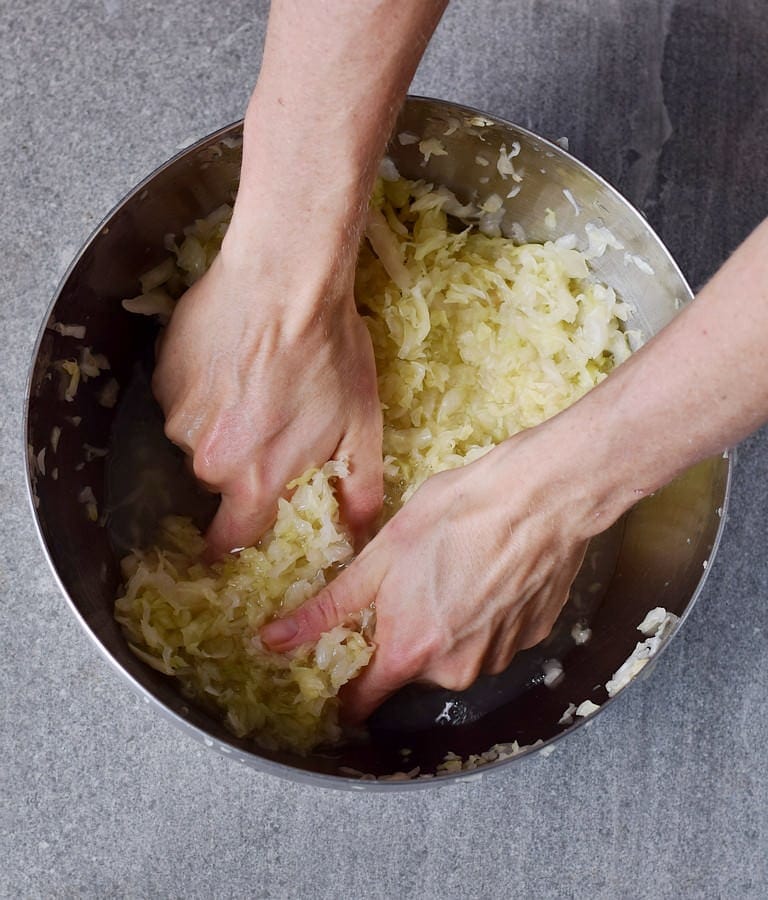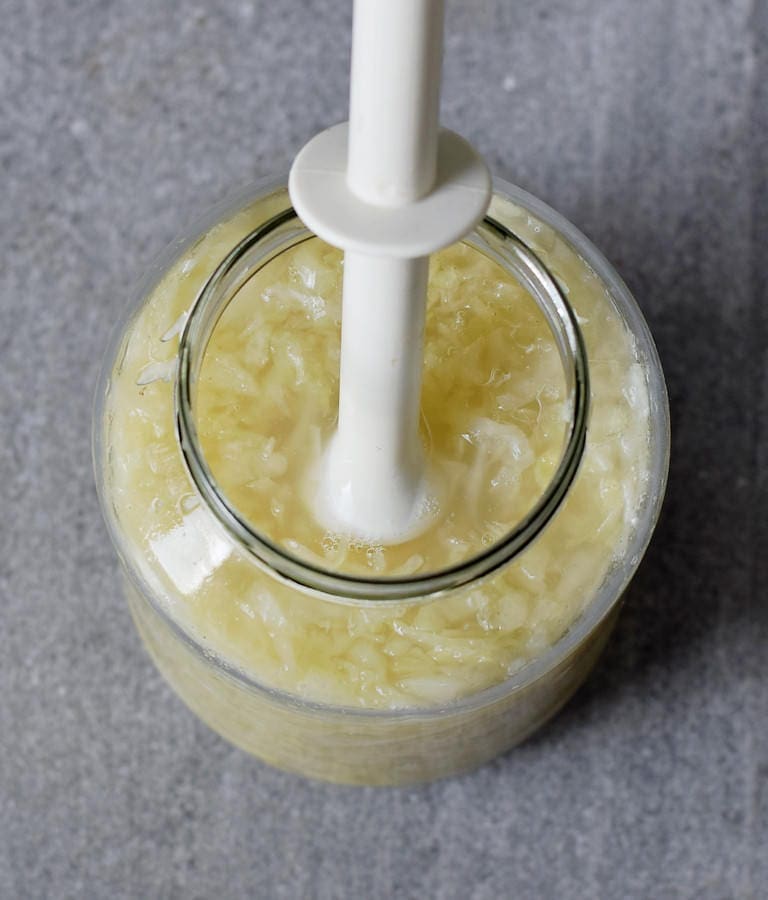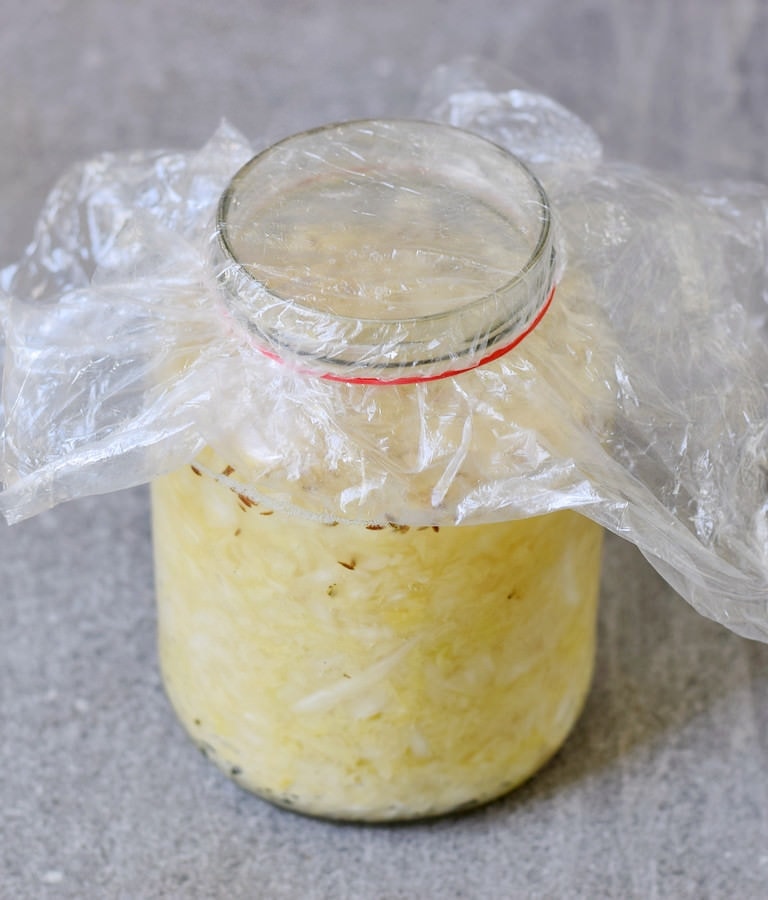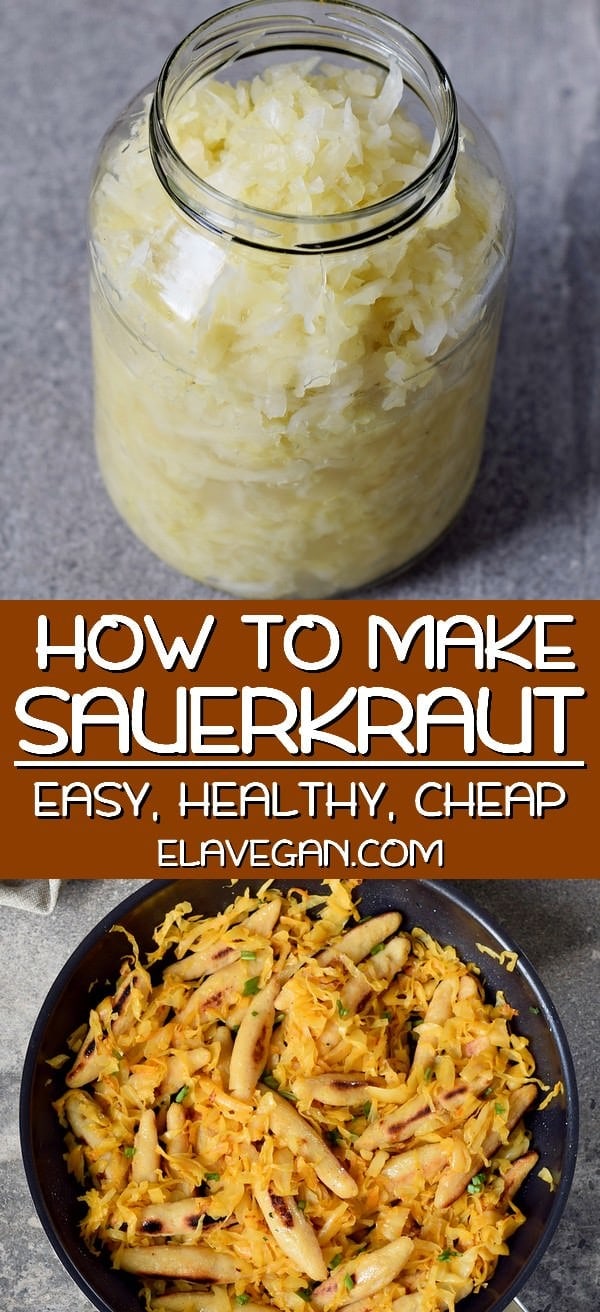I am very excited to show you how sauerkraut is made. My boyfriend and I make German sauerkraut frequently at home because it tastes delicious and is very healthy (especially for our gut)! You can eat it raw or serve it cooked with delicious potato dumplings (they are called Schupfnudeln in Germany).
Equipment Needed
When I think about DIY food projects, sauerkraut comes to my mind. It’s seriously so easy to make this German sauerkraut recipe and you need very little equipment. Actually, you just need a cutting board, a sharp knife, a large mixing bowl and a mason jar to store it.
How To Make German Sauerkraut?
As mentioned before, all you need is white cabbage and salt. For flavor, I also love to add bay leaves and caraway seeds (sometimes also juniper berries). It’s not a must, but it really adds a wonderful flavor. Trust me, I am German and sauerkraut is very popular in Germany. 😀 Before you start the process, please ensure that all utensils are very clean and sterilized.
Visual Instructions
STEP 1: Remove the outer leaves of the cabbage. Now cut the cabbage into quarters and trim out the core. Using a sharp large knife, slice each quarter down its length into very thin ribbons. You can also use a mandolin, however, please be careful.
STEP 2: Transfer the sliced cabbage to a large and clean mixing bowl and add the salt. Wash your hands and then start massaging/kneading the cabbage. Squeeze it and massage it for 5-10 minutes. The cabbage will release a lot of liquid which is perfect, the more liquid the better.
STEP 3: Pack the cabbage into a clean (sterilized) large mason jar and pour all the liquid on top. Use your fist or a pestle to push down the cabbage. The liquid should float on top of the cabbage.
STEP 4: Add bay leaves, the caraway seeds, and the juniper berries (if using). You can weigh down the cabbage with one or two clean stones, which will ensure that the cabbage is submerged in its liquid. Then cover the jar with a clean cloth or plastic wrap and secure it with a rubber band.
STEP 5: Ferment the cabbage for 3 to 10 days in a cool place 65 °F (ca. 18 °C) to 79 °F (ca. 26 °C). Keep the jar away from direct sunlight. Press down the cabbage with a pestle at least twice a day. It’s important that there is enough liquid on top. Taste it after 3 days (it ferments quicker in a warmer climate). If you are happy with the taste, screw on the cap, and refrigerate.
I always allow the sauerkraut to continue fermenting for 14-21 days in the refrigerator. The longer you let it ferment the more beneficial bacteria (probiotics) it will form. All measurements are written in the printable recipe card below.
Fermentation Process
How is sauerkraut fermented? Sauerkraut is made by a process of pickling called lactic acid fermentation. Cabbage contains beneficial bacteria that convert natural sugars found in the cabbage into lactic acid. Lactic acid acts as a preservative and is very beneficial for our gut health.
Health Benefits Of Sauerkraut
Learn about other amazing health benefits in this interesting article.
Useful Tips
Before you start making this German sauerkraut recipe, make sure to sterilize all equipment (especially the mason jar). Simply pour boiling water over it, then let it dry naturally. The cabbage should always be covered with the liquid (brine) to prevent mold growth! If there is not enough liquid, I would recommend making a brine, then add some to the jar. Do not skip the salt as it’s very important and also acts as a preservative. I always use sea salt or Himalayan salt. Make two jars at the same time. Ferment the second one longer than the first one and see which one you like more. Once you finish eating the first batch, start the third one and eat the second batch. This way, you always have fresh homemade sauerkraut on hand!
Is Sauerkraut Keto Friendly?
Absolutely! Cabbage is a low-carb veggie and sauerkraut is therefore, keto friendly. It is also very good for dieting, a serving has less than 4 g of carbs and only 27 calories.
This Homemade Sauerkraut Is:
Rich in probiotics Flavorful Tangy Healthy Easy to make Less expensive than store-bought Perfect for sandwiches, wraps, buddha bowls, salads, and more delicious dishes
Should you give this German sauerkraut recipe a try, please leave a comment and rating below and don’t forget to tag me in your Instagram or Facebook post with @elavegan and #elavegan because I would love to see it! 🙂
How To Serve? You can serve sauerkraut with the following vegan recipes:
German Schupfnudeln (Potato Dumplings) Gluten-Free Vegan Gnocchi Vegetable Fritters Vegan Grilled Cheese Homemade Taco Cups Chickpea Tacos Portobello Steaks
If you are using Pinterest, feel free to pin the following photo:
